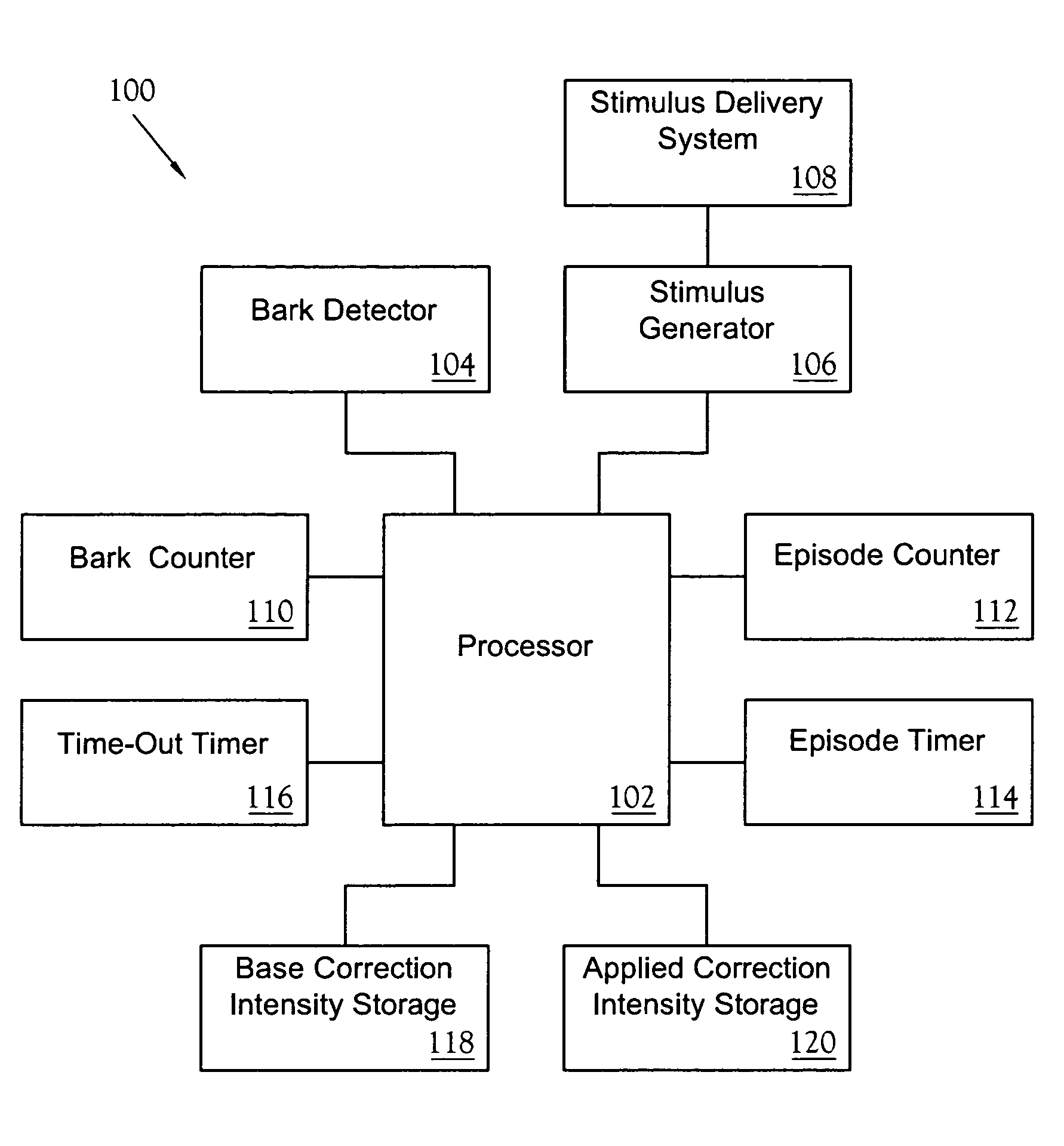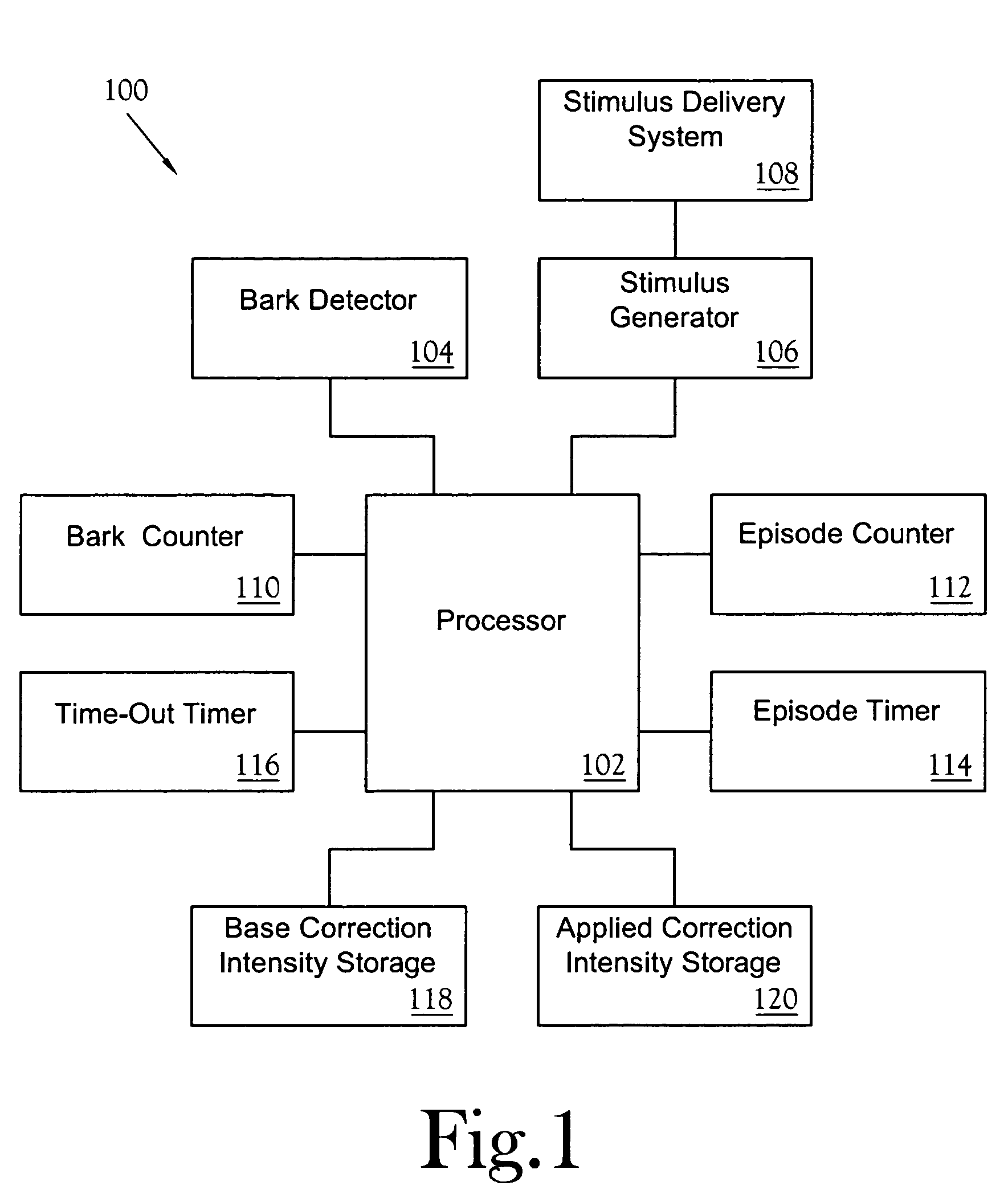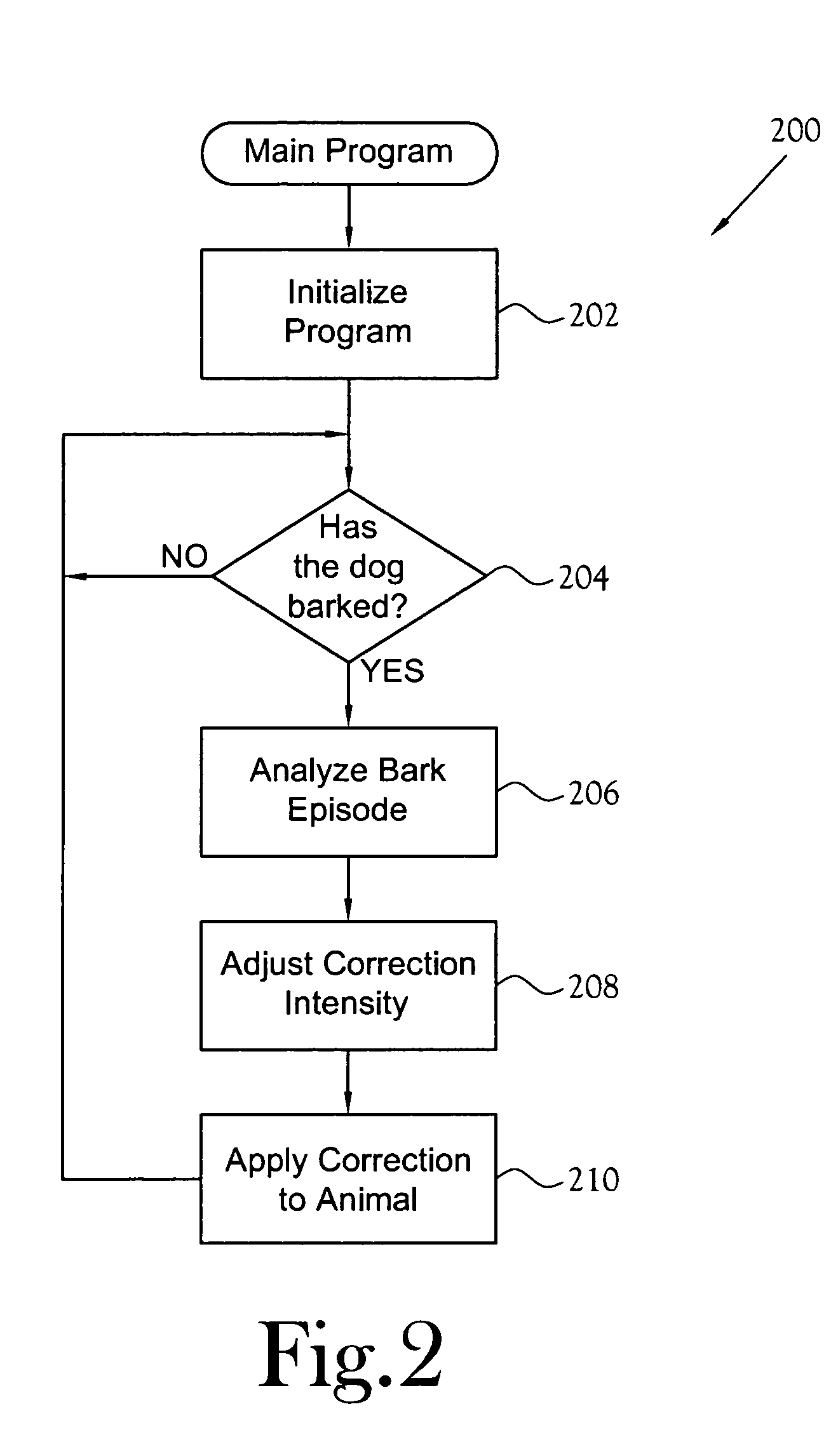Electronic animal trainer with temperament learning
a technology of electronic animal training and temperament learning, applied in the field of electronic animal training equipment, can solve the problems of inability to adapt to single intensity corrective stimulus, ineffectiveness or sometimes excessive, and one correction stimulus may be too much for timid dogs or dogs with low pain thresholds, so as to prevent excessive stimulation of animals, effective training, and quickly deter undesirable behavior
- Summary
- Abstract
- Description
- Claims
- Application Information
AI Technical Summary
Benefits of technology
Problems solved by technology
Method used
Image
Examples
Embodiment Construction
An electronic animal trainer with temperament learning is described herein and shown at 100 in the figures. The electronic animal trainer with temperament learning 100 learns and remembers the response pattern of the animal to the correction stimulus to provide a customized training profile.
FIG. 1 illustrates a block diagram of one embodiment of the electronic animal trainer with temperament learning 100. The core of the electronic animal trainer is the processing unit 102. The illustrated embodiment of the electronic animal trainer with temperament learning 100 includes a triggering unit, such as a bark detector 104. In general, the triggering unit detects a behavior of the animal and produces a triggering signal when the behavior is detected. Barking is a behavior that is easily detected and corrected without the need for intervention by a human. Those skilled in the art should appreciate that the bark detector could be substituted with a triggering unit for another behavior that ...
PUM
 Login to View More
Login to View More Abstract
Description
Claims
Application Information
 Login to View More
Login to View More - R&D
- Intellectual Property
- Life Sciences
- Materials
- Tech Scout
- Unparalleled Data Quality
- Higher Quality Content
- 60% Fewer Hallucinations
Browse by: Latest US Patents, China's latest patents, Technical Efficacy Thesaurus, Application Domain, Technology Topic, Popular Technical Reports.
© 2025 PatSnap. All rights reserved.Legal|Privacy policy|Modern Slavery Act Transparency Statement|Sitemap|About US| Contact US: help@patsnap.com



